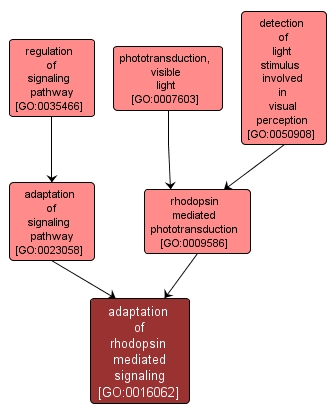GO TERM SUMMARY
|
| Name: |
adaptation of rhodopsin mediated signaling |
| Acc: |
GO:0016062 |
| Aspect: |
Biological Process |
| Desc: |
Process by which the visual system can modulate its sensitivity and response to light stimuli (that might vary over more than 6 magnitudes in intensity) without response saturation. |
Synonyms:
- adaptation of rhodopsin mediated signalling
|
|

|
INTERACTIVE GO GRAPH
|














